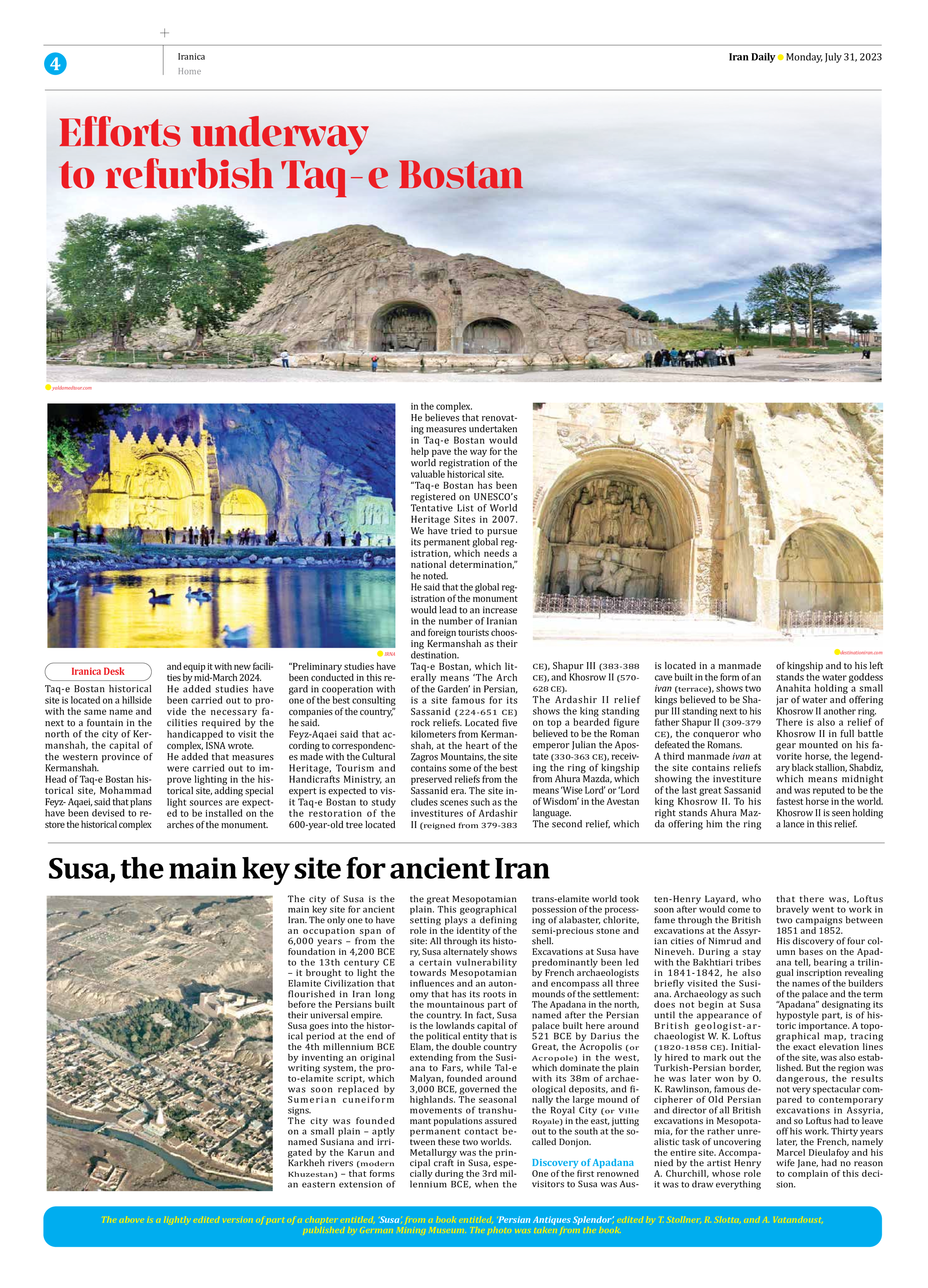
Efforts underway to refurbish Taq-e Bostan
Taq-e Bostan historical site is located on a hillside with the same name and next to a fountain in the north of the city of Kermanshah, the capital of the western province of Kermanshah.
Head of Taq-e Bostan historical site, Mohammad Feyz- Aqaei, said that plans have been devised to restore the historical complex and equip it with new facilities by mid-March 2024.
He added studies have been carried out to provide the necessary facilities required by the handicapped to visit the complex, ISNA wrote.
He added that measures were carried out to improve lighting in the historical site, adding special light sources are expected to be installed on the arches of the monument.
“Preliminary studies have been conducted in this regard in cooperation with one of the best consulting companies of the country,” he said.
Feyz-Aqaei said that according to correspondences made with the Cultural Heritage, Tourism and Handicrafts Ministry, an expert is expected to visit Taq-e Bostan to study the restoration of the 600-year-old tree located in the complex.
He believes that renovating measures undertaken in Taq-e Bostan would help pave the way for the world registration of the valuable historical site.
“Taq-e Bostan has been registered on UNESCO’s Tentative List of World Heritage Sites in 2007. We have tried to pursue its permanent global registration, which needs a national determination,” he noted.
He said that the global registration of the monument would lead to an increase in the number of Iranian and foreign tourists choosing Kermanshah as their destination.
Taq-e Bostan, which literally means ‘The Arch of the Garden’ in Persian, is a site famous for its Sassanid (224-651 CE) rock reliefs. Located five kilometers from Kermanshah, at the heart of the Zagros Mountains, the site contains some of the best preserved reliefs from the Sassanid era. The site includes scenes such as the investitures of Ardashir II (reigned from 379-383 CE), Shapur III (383-388 CE), and Khosrow II (570-628 CE).
The Ardashir II relief shows the king standing on top a bearded figure believed to be the Roman emperor Julian the Apostate (330-363 CE), receiving the ring of kingship from Ahura Mazda, which means ‘Wise Lord’ or ‘Lord of Wisdom’ in the Avestan language.
The second relief, which is located in a manmade cave built in the form of an ivan (terrace), shows two kings believed to be Shapur III standing next to his father Shapur II (309-379 CE), the conqueror who defeated the Romans.
A third manmade ivan at the site contains reliefs showing the investiture of the last great Sassanid king Khosrow II. To his right stands Ahura Mazda offering him the ring of kingship and to his left stands the water goddess Anahita holding a small jar of water and offering Khosrow II another ring.
There is also a relief of Khosrow II in full battle gear mounted on his favorite horse, the legendary black stallion, Shabdiz, which means midnight and was reputed to be the fastest horse in the world. Khosrow II is seen holding a lance in this relief.







